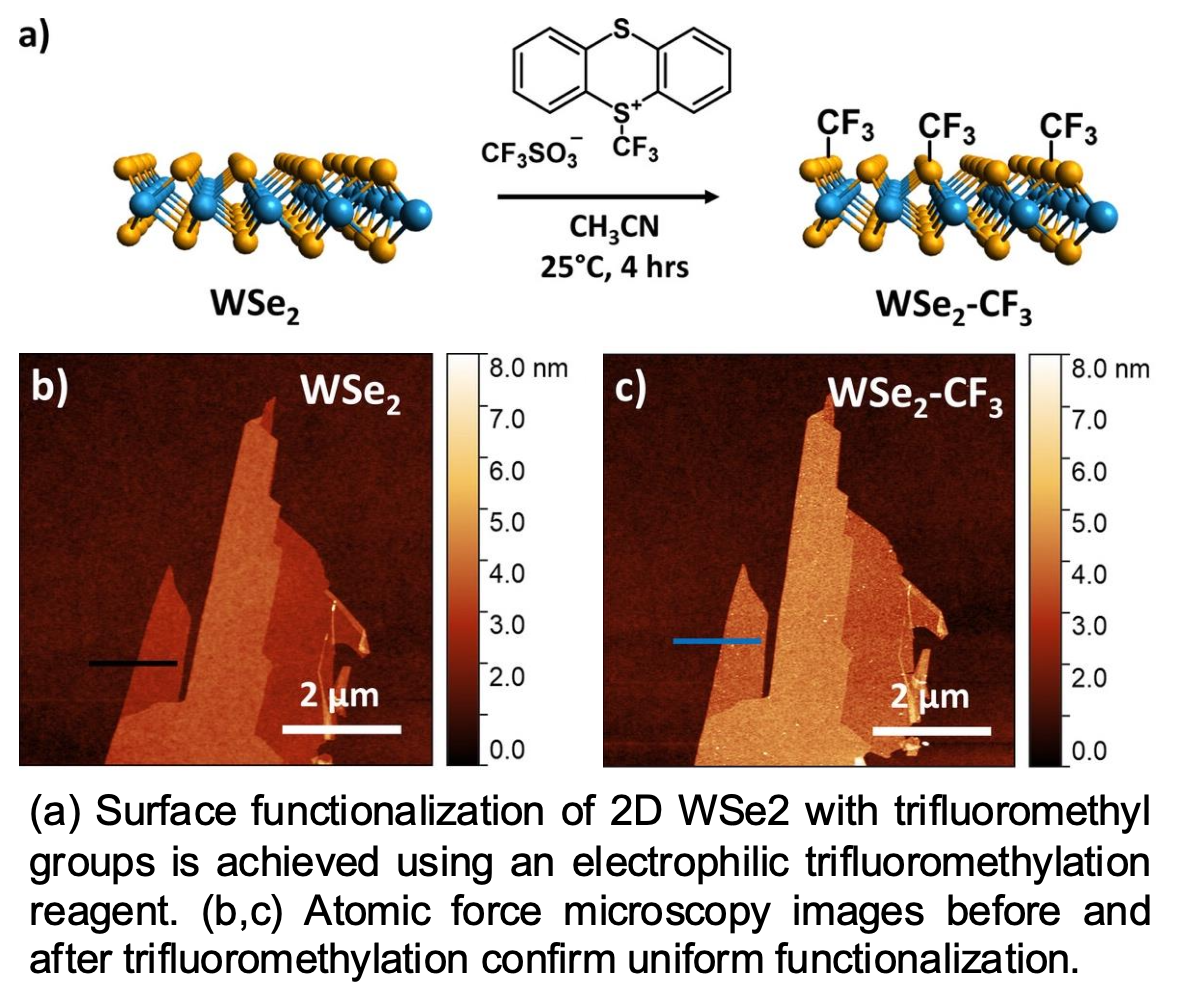 Two-dimensional (2D) semiconductors are promising materials for next-generation electronic and iontronic devices. As a consequence of their ultrathin dimensions, 2D materials offer the opportunity for continued device scaling while avoiding the short-channel effects that hinder bulk semiconductors. Due to their high surface areas, chemical modification is a powerful strategy for tuning the electronic properties of 2D semiconductors, although their dangling-bond-free surfaces present challenges to stable, uniform covalent functionalization. Northwestern University MRSEC IRG-2 has overcome these challenges by electrophilically trifluoromethylating 2D semiconducting WSe2 and MoS2 using the reagent trifluoromethyl thianthrenium triflate (TTT). Chemical characterization and density functional theory calculations reveal that the trifluoromethyl groups covalently bind to surface chalcogen atoms as well as oxygen substitution sites. Trifluoromethylation induces p-type doping in the underlying 2D semiconductor, enabling the modulation of charge transport and optical emission properties. This work introduces a versatile and efficient method for tailoring the optical and electronic properties of 2D transition metal dichalcogenides, which are key constituent building blocks of hybrid ionic-electronic conductors.
Two-dimensional (2D) semiconductors are promising materials for next-generation electronic and iontronic devices. As a consequence of their ultrathin dimensions, 2D materials offer the opportunity for continued device scaling while avoiding the short-channel effects that hinder bulk semiconductors. Due to their high surface areas, chemical modification is a powerful strategy for tuning the electronic properties of 2D semiconductors, although their dangling-bond-free surfaces present challenges to stable, uniform covalent functionalization. Northwestern University MRSEC IRG-2 has overcome these challenges by electrophilically trifluoromethylating 2D semiconducting WSe2 and MoS2 using the reagent trifluoromethyl thianthrenium triflate (TTT). Chemical characterization and density functional theory calculations reveal that the trifluoromethyl groups covalently bind to surface chalcogen atoms as well as oxygen substitution sites. Trifluoromethylation induces p-type doping in the underlying 2D semiconductor, enabling the modulation of charge transport and optical emission properties. This work introduces a versatile and efficient method for tailoring the optical and electronic properties of 2D transition metal dichalcogenides, which are key constituent building blocks of hybrid ionic-electronic conductors.